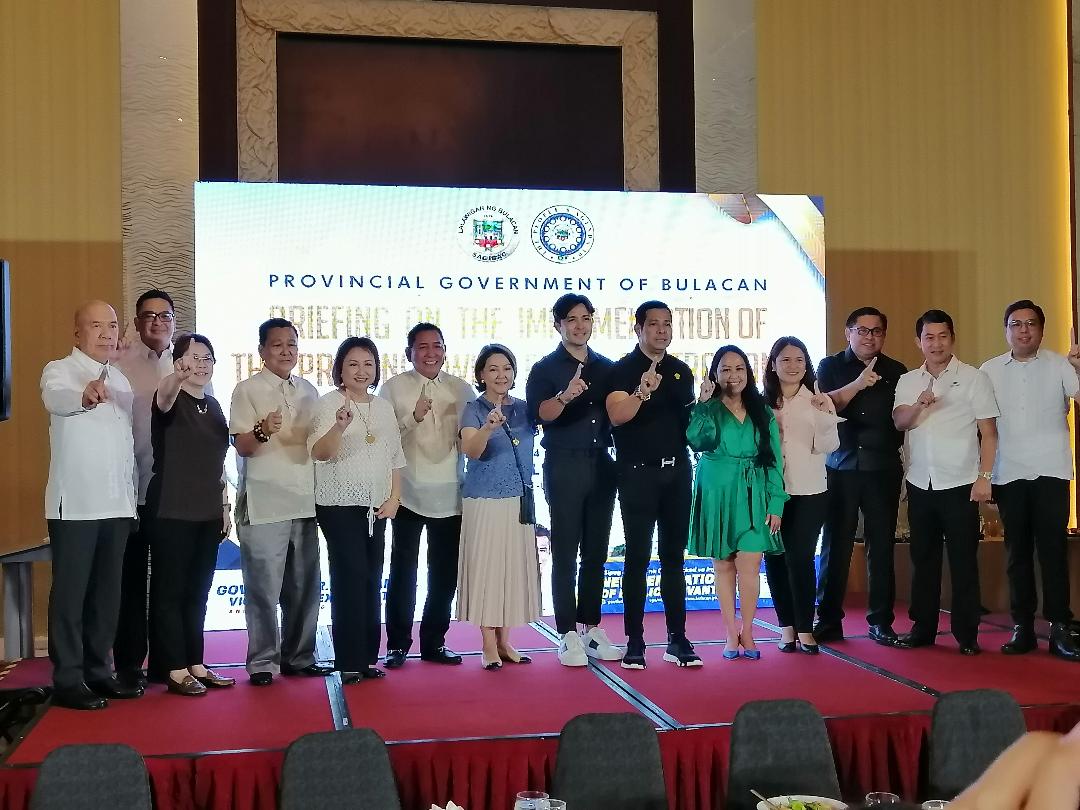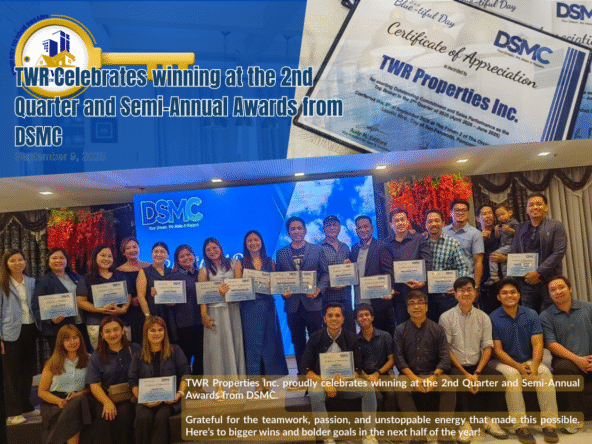By Freddie Velez
Apr 30, 2024 08:33 AM
ONE BULACAN — Governor Daniel R. Fernando (9th from left) and Vice Gov. Alex C. Castro (8th from left) with Bulacan District Representatives, DENR, DPWH, and TCSC officials, and Bulacan Provincial Administrator show the “One Bulacan” sign after the briefing on the implementation of the province-wide flood control and river restoration program at EDSA Shangri-La Manila Isla Ballroom on Monday, April 29, 2024. (Freddie Velez)
Bulacan Governor Daniel R. Fernando has announced the start of the dredging of rivers in the province by the middle of as part of the provincial government’s flood control and river restoration program.
During a briefing held at EDSA Shangri-La Manila Isla Ballroom on Monday, April 29, Fernando said the dredging activities will be conducted in response to the national government’s call, through Department of Environment and Natural Resources (DENR) Administrative Order 2020-07, for the restoration of the natural state and water flow of heavily-silted river channels.
Fernando presented to Bulacan congressmen, mayors, vice mayors, and other officials what he envisions as a concrete and long-term solution to the decade-old problem of river silting in the province.
He said that to restore the heavily-silted rivers, particularly Angat, Pamarawan, Malolos, Hagonoy, and Guiguinto, massive dredging is needed to open a navigational channel in the offshore delta.
He said the key to solving the decades-old flooding problem in the province is environmental dredging combined with the management of floodwater movement through the construction of floodwalls and floodgates.
“Hopefully the effects of the river restoration, through the help of Torejas Construction Supply Corporation (TCSC), our private partner, will be immediately felt in the coming rainy season,” Fernando said.
He added that engineers and geologists from TCSC will use state-of-the-art power dredging machines capable of dredging 1,500 to 2,000 cubic meters per hour compared to conventional dredgers that take about a month of operations to dredge the equivalent of this one-hour volume.
“It’s a game-changer,” he added.
The project will entail no cost to the Provincial Government. Instead, it will increase the income of the province through revenue sharing by commercial disposition of the dredged materials from the rivers to support big reclamation projects, the plans and design of the river restoration program of which will be carried out with care for the environment.
According to TCSC Corp., a systematic, scientific, and ecologically oriented deepening of heavily-silted rivers in Bulacan will be carried out so that the flow of water from its tributaries will gradually return to normal.
In this way, they said, flooding will be alleviated in the coming years as the carrying capacity of the rivers and other waterways will be completely restored.
Other dredge materials will also be used to restore the wetland ecosystem and will be placed in an area that will not obstruct the water flow.
“We will plant mangroves here to protect the health of our coastline ecosystem and as biodiversity support as a breeding and feeding ground for different types of fish and marine species,” they added.
Fernando said the agricultural wetland is also proposed to enable solar and wind farming and may soon provide carbon-free energy which is expected to cover about 50 percent of the energy needs of the province.
He called on Bulakenyos to do their part to put an end to the decades-long massive flooding problem in the province.
Fernando serves as the chairperson of the Inter-Agency Committee, the DENR Region 3 Regional Director acts as the vice chairperson, with the Department of Public Works and Highways Region 3, DENR Environmental Management Bureau Region 3, and DENR Mines and Geosciences Bureau Region 3 as members.
Source: Manila Bulletin




